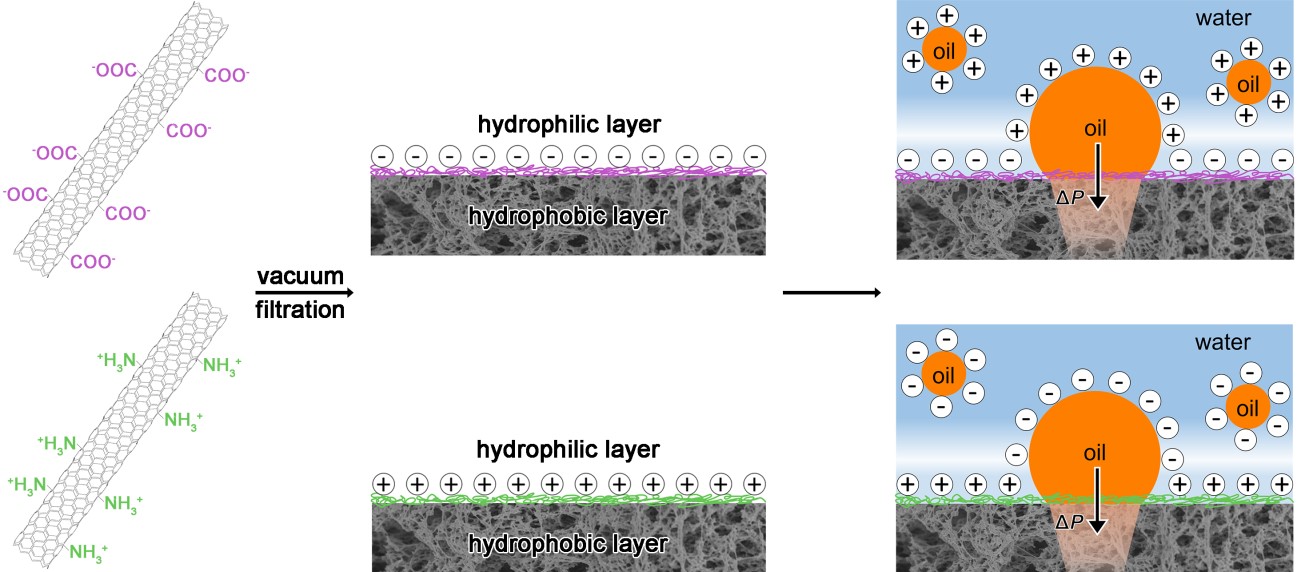Congratulations to Yun-peng An for her recent publication on ACS Appl. Mater. Inter.
Oil/water separation, especially for those surfactant-stabilized oil-in-water (O/W) emulsions, is required to protect our ecological environment from destruction. Janus membranes with a function of deemulsification appear as a kind of efficient materials for the separation of O/W emulsions because of a precise adjustment of the surface nature for the hydrophilic and hydrophobic layers. However, existing strategies of membrane preparation suffer from complicated multisteps, leading to uncontrolled thickness of the hydrophilic deemulsification layer. Herein, we present a facile and tunable method to prepare a series of Janus membranes consisting of negatively or positively charged carbon nanotubes (CNTs) and hydrophobic microfiltration membranes by vacuum filtration. The thickness of the hydrophilic CNT coating is thus well-controlled by engineering the amount of CNTs deposited on the substrate membrane. The prepared Janus membranes are effective for the separation of both heavy oil and light oil from O/W emulsions through deemulsification owing to the charge-screening effect. It is very interesting that those membranes displaying a combination of water contact angle and underwater oil contact angle both above 90° have a unique oil delivery behavior and thus high separation performance of oil from O/W emulsions. Such Janus membranes can retrieve 89% of oil in 40 min from the 1,2-dichloroethane/water emulsions with the droplet size of 19 μm. This easy-to-prepare and easy-to-tune strategy provides feasibilities for practical applications of Janus membranes to the deemulsification and separation of O/W emulsions.

.png)